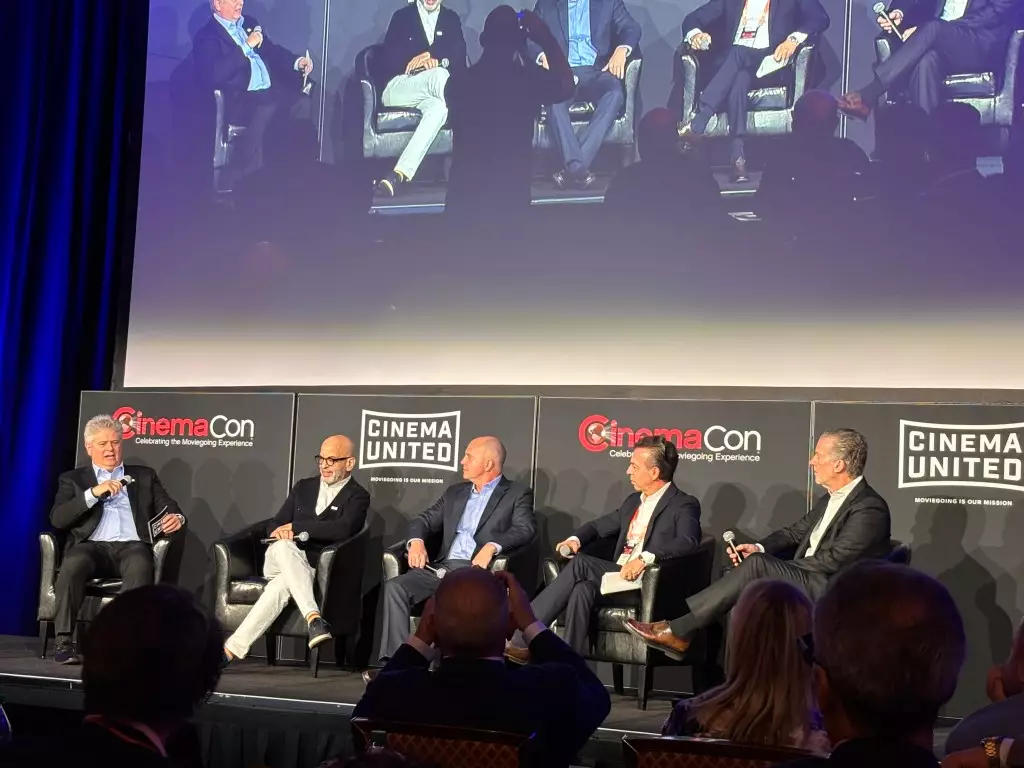The landscape of Hollywood is shifting beneath our very feet, and it’s hard to ignore the troubling trajectory the film industry is on. Jeff Goldstein, the president of Global Distribution at Warner Bros. Pictures, articulates a mindset that resonates across the board; movie-making is becoming prohibitively expensive. The costs associated with producing and marketing films are skyrocketing, yet the returns are dwindling. This grim reality deserves a thorough examination. In an era where audiences are not only fragmented but also bombarded with information on a global scale in mere moments, the value proposition of traditional filmmaking is under serious scrutiny.
Goldstein emphasizes the need for the industry to right the ship, but one must wonder: is the ship even seaworthy anymore? Streaming platforms with different funding structures challenge the legacy studios that have long dominated Hollywood. In this new climate, the chances of success are slim; the stakes are higher than ever, yet studios seem tethered to outdated business practices that fail to meet the demands of modern viewers.
The Challenge of Effective Marketing
At the heart of Goldstein’s message is an acknowledgment of a bitter truth: the effectiveness of marketing has plummeted, even as marketing budgets reach unprecedented levels. It’s a disheartening paradox; studios are spending more, but not only are they reaching fewer audiences, but they are increasingly missing the mark. This situation fosters a sense of desperation that should alarm moviegoers and filmmakers alike.
With information flowing at lightning speed, the window of opportunity narrows to mere moments. One poorly received preview can devastate the perception of a movie before it has a chance to even reach its intended audience. We live in an age where the fortunes of a film can be altered between breakfast and lunch, all thanks to social media and instantaneous critiques. The marketing challenge faced by studios is not simply a matter of promotion; it’s about precision and effectiveness in engaging a consumer base that is volatile and discerning.
The Fractured Audience Dilemma
Mark Viane of Paramount Pictures reinforces the sentiment that the market is fracturing more each day. With ever-increasing competition, reaching an audience has devolved into a game of bullseyes—only to realize that the bullseye shifts with every viewing experience and every platform. The challenges that studios face are exacerbated by the inability to replicate successful marketing campaigns, leaving them at the mercy of an unpredictable consumer environment. This chaotic landscape severely hampers what should be a creative endeavor, turning it into a finger-pointing exercise after the fact.
It’s a tragedy when creativity becomes secondary to the drumbeat of metrics and audience segmentation. Isn’t it ironic that a form of art meant to bridge gaps and tell profound stories is now forced to cater to the whims of analytics? Ironically, as the allure of cinema dissipates, so too does its ability to inspire and engage on a broader cultural scale.
The Erosion of the Cinema Experience
A distressing aspect of this narrative is the dilution of the cinematic experience itself. With audiences increasingly turned off by pre-show advertisements and diluting content aimed at maximizing profit, the essence of cinema evaporates. How long can studios ignore the experience of the viewer before risking permanent alienation? When going to the movies becomes synonymous with commercial disruption rather than a captivating experience, the industry risks losing its most loyal fans.
One must question how studios can navigate these pitfalls, especially when restoring faith in the cinema requires more than just content; it requires an enriched experience that audiences crave. After all, a customer having a stellar dinner will surely return to a restaurant, while a bad experience will drive them away for good. The same principle applies to cinemas, yet studios appear oblivious to these lessons.
What Lies Ahead?
As we look ahead, the future of Hollywood remains uncertain. The challenges depicted at CinemaCon serve as a microcosm of the broader issues plaguing the industry. It will be interesting to observe how studios adapt—whether they embrace innovation and audience engagement or retreat into the shadows of failed concepts. The stakes are high: the battle is not just for box office receipts, but for the very soul of cinema itself. The question, though, remains unanswered: Will Hollywood find a way to evolve, or will it sink under the weight of its own outdated frameworks?

